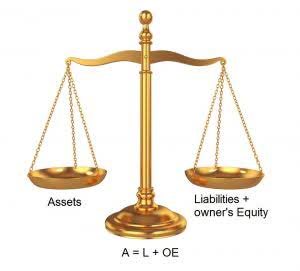
Using software that tracks construction vehicles Retail Accounting through GPS or logs operator hours digitally is a great place to start. Bonus points if the online data is visible to all parties so discrepancies can be avoided completely by everyone being on the same page. Arrears billing in construction is the process of billing at the end of a project. Payment is sent out as a lump sum once all stakeholders have signed off and approved the final product. The billing method of any construction contract is a pivotal detail for both parties. Each method carries different risks and advantages for either side and should be consciously considered in negotiations.
- Hiring a specialist can improve financial efficiency and reduce billing errors.
- While some owners manage all the project billing on their own, others will bring in architects or a construction manager who will handle billing for them.
- Our connected global construction platform unites all stakeholders on a project with unlimited access to support and a business model designed for the construction industry.
- Construction billing refers to the process of invoicing clients, tracking payments, and ensuring accurate financial documentation for a construction project.
- Time and Materials (T&M) billing is a payment model in which clients are invoiced based on the labor hours worked and the cost of materials used in a project.
Select the Right Time
If you are still figuring out which one is the right billing method for you, here’s our detailed guide to finalize your pick. So, let’s get into this topic to know what construction billing is and what construction billing methods are. Traditionally it has been a form of progress billing using AIA forms, although now it also can refer to progress billing using other means.
Lump Sum Completion Percentage (AIA-Style)
We’re a mobile app ecosystem that simplifies site-to-office communication for better collaboration on your construction projects. While it encourages transparency and covers all costs, it may incentivise higher spending since the contractor’s profit increases with the project’s total cost. Looking to reduce time to payment, improve risk management, and attract more customers?

Project Financing
In this article, we will break down the five of the most common construction billing methods, taking a look at the advantages and disadvantages of each. This method breaks the final project cost into quantifiable units (e.g., per square foot of paving) with a fixed price for each unit. It offers construction billing methods transparency and flexibility but requires precise measurement and tracking. Clear and comprehensive documentation of all billing-related activities is essential. This includes maintaining detailed records of work performed, materials used, change orders, and client communications. Proper documentation helps resolve disputes, ensure compliance, and provide transparency to clients.

Step 3: Submitting a Payment Application or Progress Claim

This method involves charging clients for each unit of work completed, such as per square foot or item. For example, a builder may charge $10 per square foot for laying tiles in a bathroom. With this in mind, we’ll help you make the right decision today by exploring the five main construction billing methods and highlighting their advantages and potential drawbacks. Additionally, we’ll discuss how our construction project management software can help streamline your billing processes, regardless of the method you choose. A contractor using guaranteed maximum price billing sets an upper limit to the cost of completing a construction project. Unlike lump sum billing, which allows contractors to keep additional profits if they manage to complete a project cheaper than expected, GMP billing allows the customer to keep the savings.
Construction Risk Management: Top Strategies for Mitigating Risk
- The construction industry is notorious for slow payments, costly overhead, and relying on credit to keep a project moving forward.
- It is an all-in-one software for estimators and contractors to manage important documents and finances.
- We’ll also share how to make billing tasks easier overall, with tips on invoicing, incentivizing quick payments and more.
- It also helps maintain the project’s financial efficiency by accurately recording expenses and project costs.
- By using the right construction billing methods and tools, contractors can streamline invoicing and minimize payment delays.
- This construction method is best for those who are working on long-term projects.
Construction billing always refers back to the contract terms that dictate how builders will charge for their work. These terms are crucial as they provide a structured framework for billing, ensuring fairness and clarity for all parties involved. Procore is committed to advancing the construction industry by improving the lives of people working in construction, driving technology innovation, and building a global community of groundbreakers.
Implement sustainable procurement practices
Carefully review both forms to ensure that totals align and all calculations are accurate before approving the application. For general contractors, What is bookkeeping ensuring subcontractors submit accurate AIA billing applications might require guiding them through the steps below. These steps can also be followed by general contractors looking to submit their own AIA forms. The G703, or Continuation Sheet, complements the G702 by providing a detailed breakdown of the Schedule of Values (SOV).




